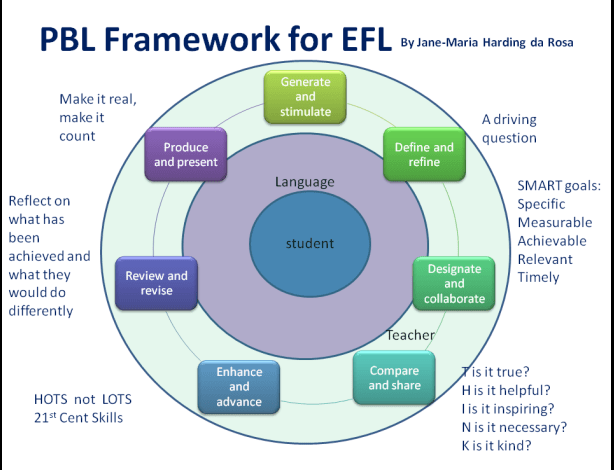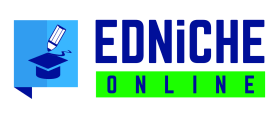By Maria Conca
What is PBL exactly?
Project Based Learning is a pedagogic framework to learn and teach a subject through a project. It’s a ‘teaching method in which students gain knowledge and skills by working for an extended period of time to investigate and respond to an authentic, engaging, and complex question, problem, or challenge’ (Buck Institute for Education, 2018). Recently, a few ELT practitioners have come up with a framework to make PBL applicable to ELT while expanding on the principles and practice of task-based learning. The best example is the PBL framework below by Jane-Maria Harding Da Rosa from IH Newcastle (2018).

Source: https://oupeltglobalblog.com/tag/jane-maria-harding-da-rosa/ (2018)
The idea of task-based and project-based learning in ELT is not new. Project work is integrated into many ELT programmes and coursebooks nowadays. However, ‘doing a project’ does not always equal ‘learning through a project’.
How does PBL differ from ‘doing a project’?
‘Doing a project’ requires students to do a short project that usually has the objective to consolidate the content of a teaching unit. For example, imagine you have covered the present perfect in the context of life experiences with your teen class at B1 level; you want your students to practise the new language learnt; you would probably ask them to do a project, e.g. create a class survey about things they have or haven’t done, collect data and present the results.
In PBL instead, the project is the unit. It is the vehicle for learning and developing skills (Buck Institute of Education, 2018). The aim is to engage students in solving a real-world problem or answering a driving question, which requires
- an extended period of time
- meaningful language use
- use of life skills – communication & collaboration, creativity, critical thinking, problem solving (21st century skills – 4C)
When does language come into play? Anytime, at different stages of the project through students’ collaborative work and negotiations, access to authentic sources, and through teacher’s language input. Now, how do plan a PBL lesson? Let’s review key PBL principles first.
Principles of PBL in a nutshell
- Self-directed learning through student-led activities
- An extended project over an extended period of time
- A key driving question leading to an investigation and clear outcomes
- A high-quality product (audio-visual/digital/physical) shared with an audience (live/virtual) as a tangible project outcome that demonstrates students’ knowledge and skills
- Core skills development: 21C skills; citizenship, intercultural competence, digital literacy (also developed through the CLIL 4C framework)
- Student Role: choice (investigation process & tools, sources, output mode, outcomes), self- & peer-evaluation, relevant feedback on own and others’ work to enhance results
- Teacher role: poses a driving question, stimulates discussion and creativity, sets goals, provides language input & corrective feedback, works as a facilitator at each stage
Applying PBL in GGEP course
Students do many activities related to skills that they learn through the unit. To finish a unit successfully, students are required to complete one project both writing and speaking skills. So, students will need to gather all information and skills they have got from the unit to apply in the project. By doing so, students will have an opportunity to put every skill into the real practice, and usually those projects respond to their language use on the daily basis.

Responses